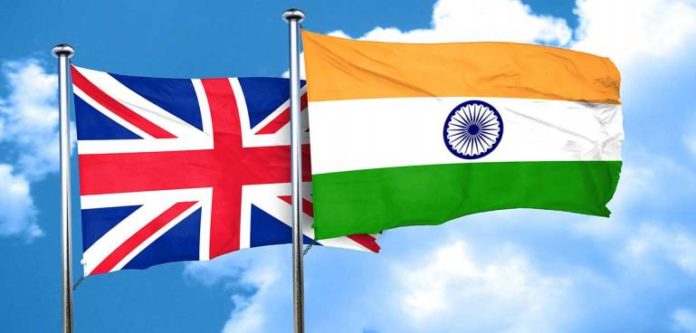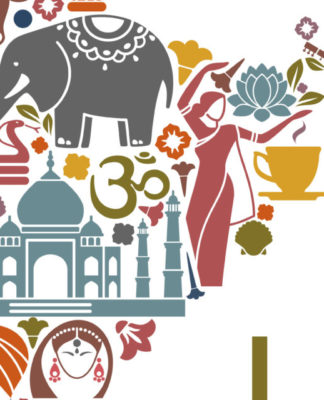The democracy of the United Kingdom and that of India is quite different from each other in various aspects. But that fact doesn’t impute the similarities that one witness while looking at these contrasting countries. United Kingdom has the democracy with the people’s rule over the country’s governance but it does not follow it in the strict sense. Where there still exists monarchy with the Queen having the power but this monarchy is constitutional in nature and is not in the complete way. The UK does not have a written form of constitution describing and enlisting the various organs of the government and highlighting about the powers, and functions of the people under it but it, in fact, follow the rules where the constitution is given supremacy but these rules of constitutional parameter are formed with the help the judicial precedents acquired and decided over the years by the learned judges in different cases and situations brought before it. Magna Carta is seen as a document adopted by the King John around 12th century for the welfare and conferring the rights and prerogative on the people which is now looked as the important document providing the power to legislature and people.
In India, on the other hand, there prevails the democracy in its full form with no kings or queen. India got its independence on 15th August, 1947 and gained its republic status on 26th January, 1950. Being republic, India has the written and codified form of constitution which gives people their rights and freedoms. This document depicting India’s freedom was drafted by B. R. Ambedkar and starts with the Preamble that says, “We, the people of India…” which indicates that the main framework of the Constitution is it’s enacted for the people of India and not for any other superior power. This shows the republic nature of the democracy of India where the people have the power to elect by the uniform means of election an authority for governance that which derives its power from the Indian Constitution itself and works for the welfare of the people.
Another difference arises where the United Kingdom follows the unitary form of government which means that the higher authority or the complete power rests within the central authority in the country. There is definitely the lower or local government besides the central authority but the ultimate right dominance and sovereignty is that of the central authority who can at any time invalidate the jurisdiction of the local administration.
In the case of India, there is the federal form of government where the central and the state authorities both have power and jurisdiction. The state government are annexed to the central power. While in the unitary form there is only supremacy of authority but in federal form of government there exist a central or national authority and the other local and state authorities having the leverage and dominance over crucial matters of pragmatic importance as well. The Indian Constitution under Part IX clearly gives the Union List, State List and Concurrent List. These lists provide the matter which the government can attend to. The Union List highlights the authority of the central government, State List of the state government and Concurrent List of both central and state government. This shows the federal nature of the India.
In UK, the head of the government who is known as the Prime Minister is to be appointed by the by the queen or monarch and have to be in consonance with the Majesty’s decision. The head of the government is appointed from the House of Commons.
In India, the President is the head of the government in whose name the official matters of the country takes place. The President of India is elected by the legislative assemblies and the Rajya Sabha (Council of State) and Lok Sabha (House of People).
The parliament in UK enjoys the dominance over the other organs of the government where there is definitely distinction of the powers of government into legislature (authority that makes laws i.e. Parliament), executive (that executes the laws i.e., the Prime Minister) and judiciary (that interprets the law i.e. Courts). So, the separation of power does exist. But in practicality, it can definitely be seen that the legislative hold the upper hand in the regulating of the procedure of law and other factum having the control of the Queen in the matter and the House of Commons and House of Lords.
In India, though there is the separation of power though not in the strict sense but there is balance of power where it is ensured that no authority excessively or erroneously exercises its power. All the three: legislature, executive, and judiciary; keeps in check each other’s power and function for any defect. This ensures the smooth functioning of the government in India and no organ of the government having the tyranny of its own and all the organs are in control over their work.
The similarities between the United Kingdom and India’s democracy is in its division of the organs of government into legislature, executive and judiciary where specific functions and powers are provided to each of them for their working and without any kind of disturbance from outside.
Another similarity can be seen in the independence of the judiciary where judiciary is given high importance in solving an issue and therefore, it necessary for it to work without undue interference and scrutiny all the time. The Parliament as well is given power where the members of the Parliament enjoy immunity from the things said in the sessions so that the proceedings can go easily.
Another similarity which can be seen is the universal adult suffrage where the people vote their favourable representative to win and each person has one vote. The identical situation exists in India with the general public voting allowing the people keep their views and help in the forming of the government for the country. The existence or dominance of the political parties is also one of the similarities.
In UK as well as in India, there is parliamentary democracy where the executive i.e. the President in case of India and Prime Minister in case of UK derives their authority from the legislative authority itself. They are the part of the Houses of the Parliament and they are responsible and held accountable for their actions.
Author Bio : Arushi Anand, 20 years old student from Delhi. A participant of Monthly Essay Competition organized by #Monomousumi , April, 2019.

















